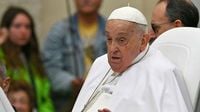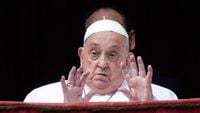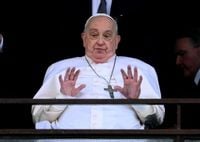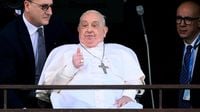Pope Francis, the 266th Pope of the Roman Catholic Church, passed away on April 21, 2025, at 7:35 AM in Casa Santa Marta, following a cerebral stroke, which led to coma and irreversible cardiorespiratory collapse. His health had been deteriorating for some time, exacerbated by a severe polymicrobial bilateral pneumonia that had kept him hospitalized at the Policlinico "Gemelli" in Rome for nearly forty days. He was discharged on March 23, 2025, but his public appearances in the weeks leading up to his death revealed a visibly weakened state.
During the Easter celebrations, doctors observed signs of what is known as facies hippocratica on his face. This condition, characterized by a drawn expression, sunken eyes, relaxed lips, and hollow cheeks, typically indicates a patient nearing death. According to various medical experts, including Professor Kanathur Shilpa and Doctor Mark Marinella, this expression serves as a crucial visual signal for healthcare providers, particularly in oncology.
On Easter Sunday, Pope Francis appeared frail, yet he chose to address the faithful from the balcony of St. Peter's Basilica, imparting his last blessing to the crowd. His voice was faint, and his face bore the unmistakable signs of suffering, including a sharp nose and a gray pallor. Observers noted that his appearance was alarming, evoking the historical medical term "facies hippocratica," which has been used since ancient times to describe the facial characteristics of dying patients.
Professor Leonardo De Luca, a cardiologist, explained that the facies hippocratica is often seen in elderly patients suffering from terminal illnesses. It is linked to severe conditions such as peritonitis, serious infections, and chronic degenerative diseases. Ippocrates, the ancient Greek physician, first documented this expression, indicating that a lack of improvement in a patient's condition over a certain timeframe suggests a fatal outcome is imminent.
In the hours leading up to his death, Pope Francis woke at 6 AM but experienced a sudden illness an hour later, which led doctors to suspect a stroke. According to Vatican physician Andrea Arcangeli, the stroke resulted in significant neurological damage, ultimately causing the Pope's death.
Despite the grave circumstances, Pope Francis's choice to remain in public until the end exemplified his dedication to his role and his flock. Many noted the profound personal sacrifice he made to be present with the people he served, even as his health declined. Professor Nicola Montano remarked that while the signs of his deteriorating condition were evident, the Pope's decision to bless the crowd was a powerful message of faith and resilience.
Facies hippocratica is not merely a clinical diagnosis but a significant indicator of a patient's condition. It reflects the body's struggle to maintain vital functions, often resulting in reduced blood flow and oxygen to peripheral tissues. This phenomenon can manifest in various critical situations, including severe dehydration, internal bleeding, and respiratory crises.
As the news of his passing spread, the term "facies hippocratica" became one of the most searched phrases online, reflecting the public's concern and interest in the medical signs associated with the Pope's final days. Medical professionals emphasized that this facial expression serves as a critical prognostic tool, highlighting the importance of careful observation in terminally ill patients.
In retrospect, the last public appearance of Pope Francis serves as a poignant reminder of the fragility of life. His visible suffering, coupled with his unwavering commitment to his duties, underscores the complex interplay between health, faith, and the human spirit. As the world mourns his loss, many will remember not only his contributions to the Church but also the profound message of hope and perseverance he conveyed in his final moments.
In conclusion, the passing of Pope Francis marks the end of an era for the Catholic Church. His legacy will undoubtedly be shaped by both his teachings and the manner in which he faced his own mortality. The signs of facies hippocratica observed in his final days serve as a stark reminder of the inevitable nature of life and death, and the enduring strength of faith even in the face of personal suffering.







